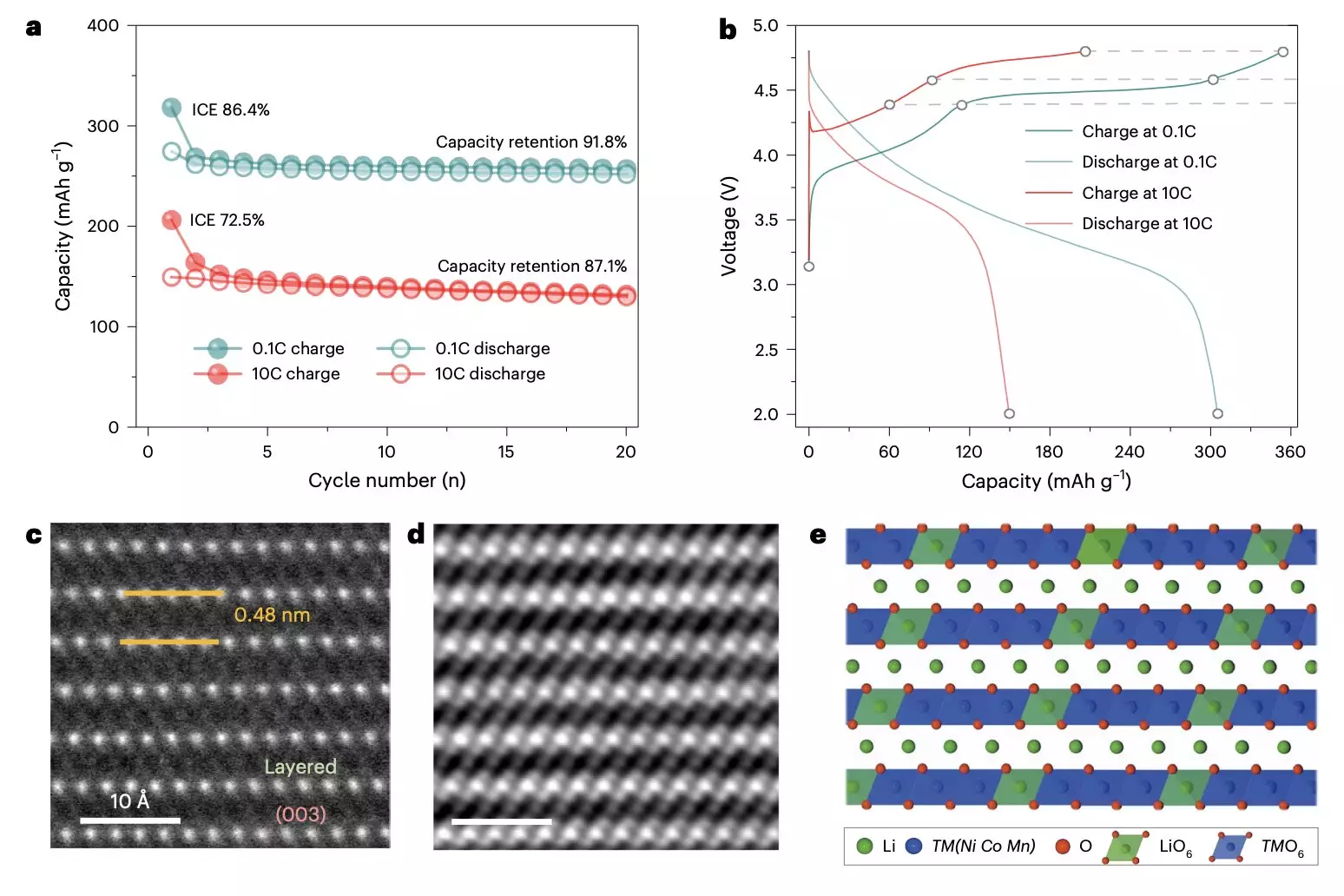In the face of increasing energy demands and the urgent need for sustainable technological solutions, researchers have been diligently working to enhance battery technologies. Central to their innovations is the quest to create batteries that not only hold more energy but also charge swiftly, discharge gradually, and endure over longer periods. These goals are driven by the rising popularity of electric vehicles (EVs) and portable electronic devices, where battery efficiency and reliability are paramount.
A pivotal aspect of this research focuses on the investigation of new materials used in battery cathodes, which play a crucial role in determining overall performance. Among the most promising candidates are layered lithium-rich transition metal oxides. These materials are increasingly recognized for their potential to significantly improve the energy density of rechargeable batteries.
The layered structure of lithium-rich transition metal oxides is key to their impressive performance. This unique configuration allows lithium ions to traverse through layers during charging and discharging cycles. Their composition, rich in lithium, facilitates a greater capacity for energy storage and release. Furthermore, the inclusion of transition metals—such as manganese (Mn), cobalt (Co), and nickel (Ni)—as well as oxygen anions helps to promote vital redox (reduction-oxidation) reactions. These reactions are essential for the energy yield of batteries, as they enable the movement of electrons.
Despite their promising features, these layered cathodes often experience rapid degradation, leading to voltage loss and instability. This deterioration has hindered their implementation at a commercial scale. The pressing challenge for researchers, therefore, lies in understanding the nature of this degradation, which has spurred multiple investigative studies across various global institutions.
A recent investigation by a team comprising researchers from Sichuan University and Southern University of Science and Technology in China has made notable strides in unpacking the factors that lead to the degradation of these lithium-rich cathodes. Their findings, published in *Nature Nanotechnology*, delve into the structural, chemical, and kinetic mechanisms that underlie the short lifespan of batteries utilizing these materials.
The researchers employed an array of advanced imaging techniques, including energy-resolved transmission X-ray microscopy (TXM), to gather critical insights into the nanoscale and microscale behavior of the cathodes under operational conditions. Their findings reveal significant challenges related to oxygen defects and distortions, which arise during the initial charging cycles and drive the degradation process. Specifically, as the battery cycles, a high incidence of oxygen defects instigates phase transformations and the development of nanovoids within the cathode particles.
The research illuminates several structural changes that occur during battery operation, notably underscoring the effects of ultrafast lithium intercalation and deintercalation. These processes contribute to lattice distortions, dissolution of transition metal ions, and variations in lithium site occupancy, leading to irreversible structural alterations within the cathode material. These updates are linked not only to low initial Coulombic efficiency but also to ongoing mechanical stress, including cracking and expansion observable during subsequent charging cycles.
The implications of this research are far-reaching. By revealing the specific pathways associated with the degradation of layered lithium-rich transition metal oxides, the researchers are paving the way for future studies aimed at developing strategies to mitigate these issues. By addressing the structural and chemical factors identified in their work, there is potential to significantly enhance the lifespan and performance of next-generation batteries.
While layered lithium-rich transition metal oxides hold incredible promise for advancing battery technologies, significant challenges remain. The research efforts aimed at unraveling the complexities of their degradation provide valuable insights that could drive future innovations in the field. By leveraging these findings, the development of more resilient cathode materials will likely play a crucial role in advancing not only electric vehicles but also a myriad of portable electronic devices—ultimately contributing to a more energy-efficient and sustainable future.


Leave a Reply